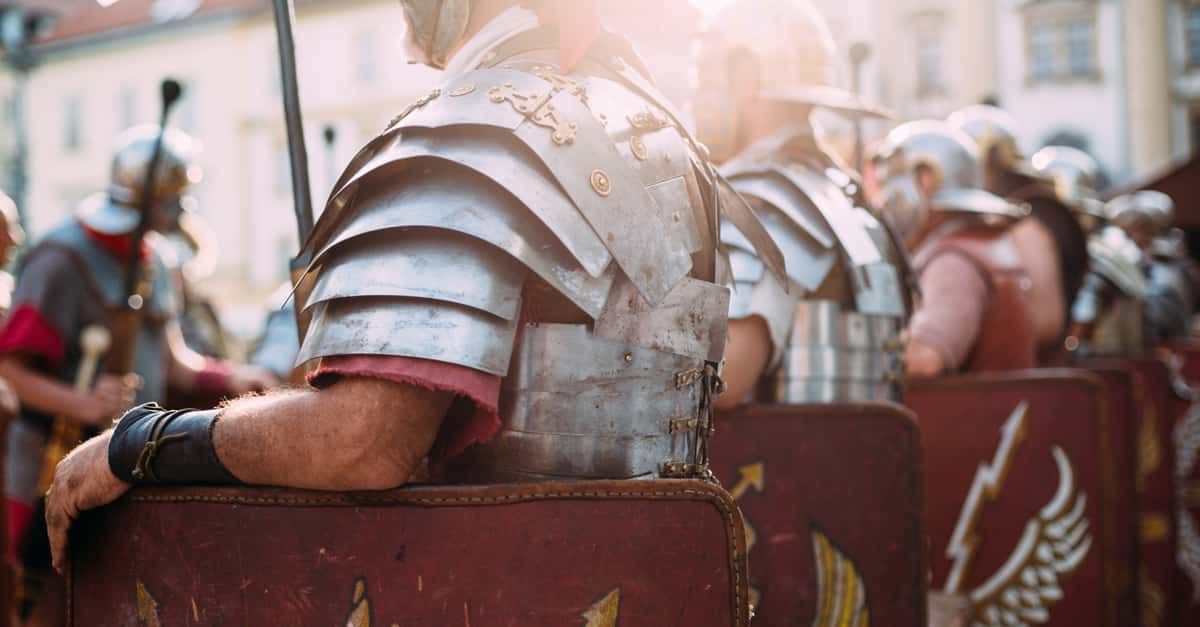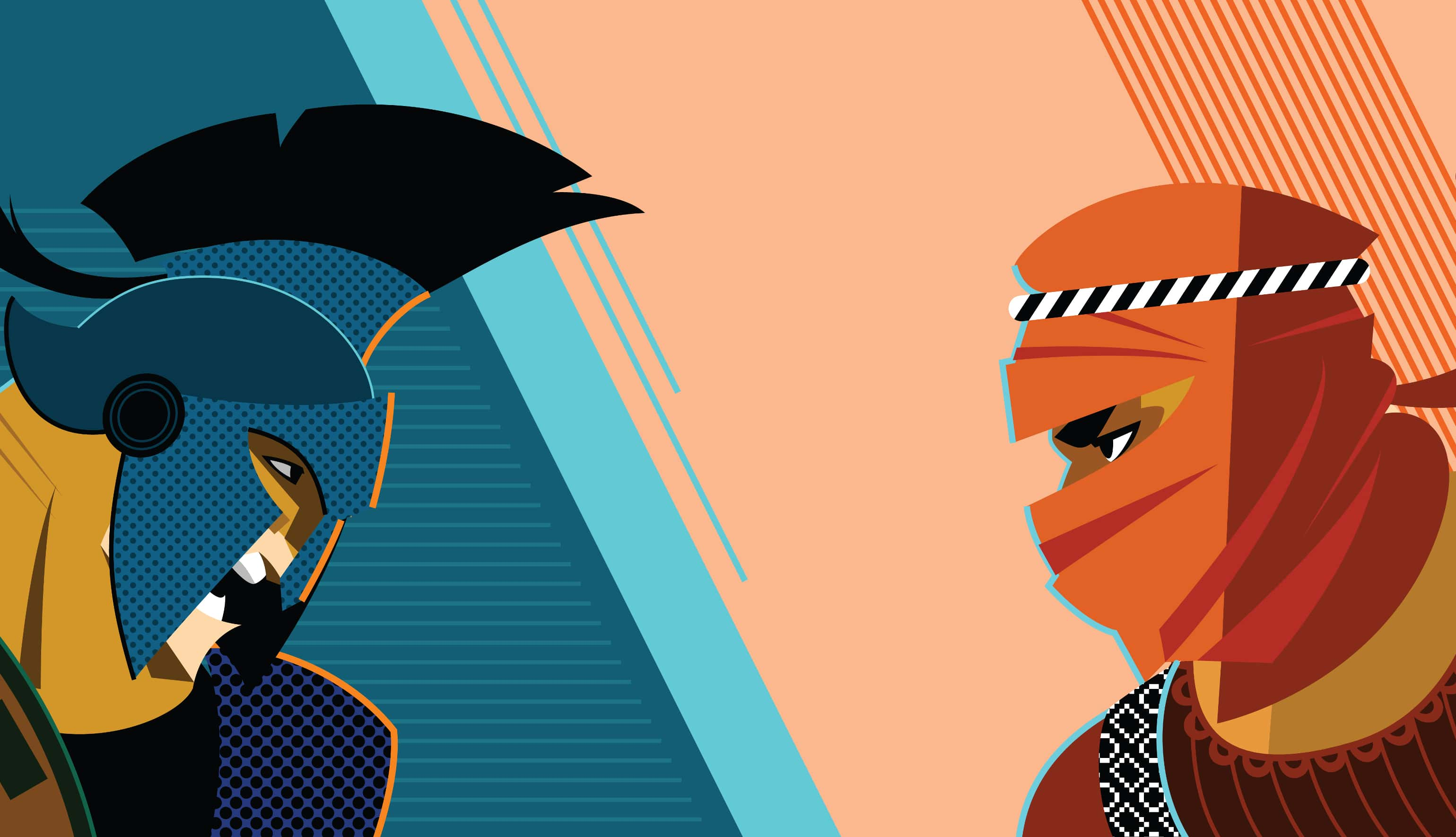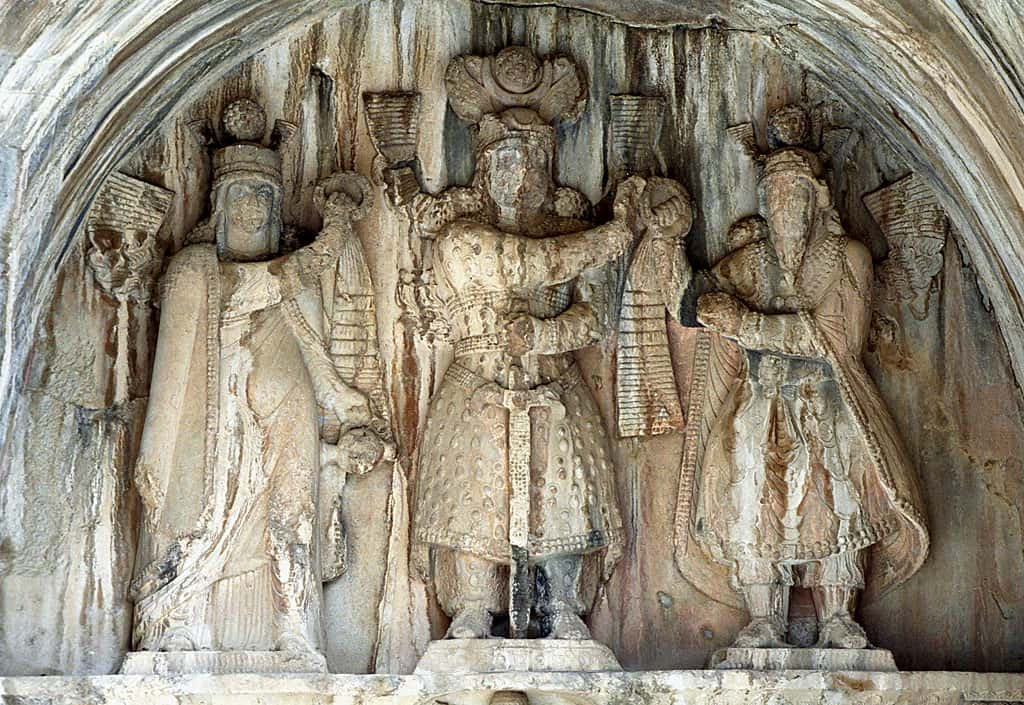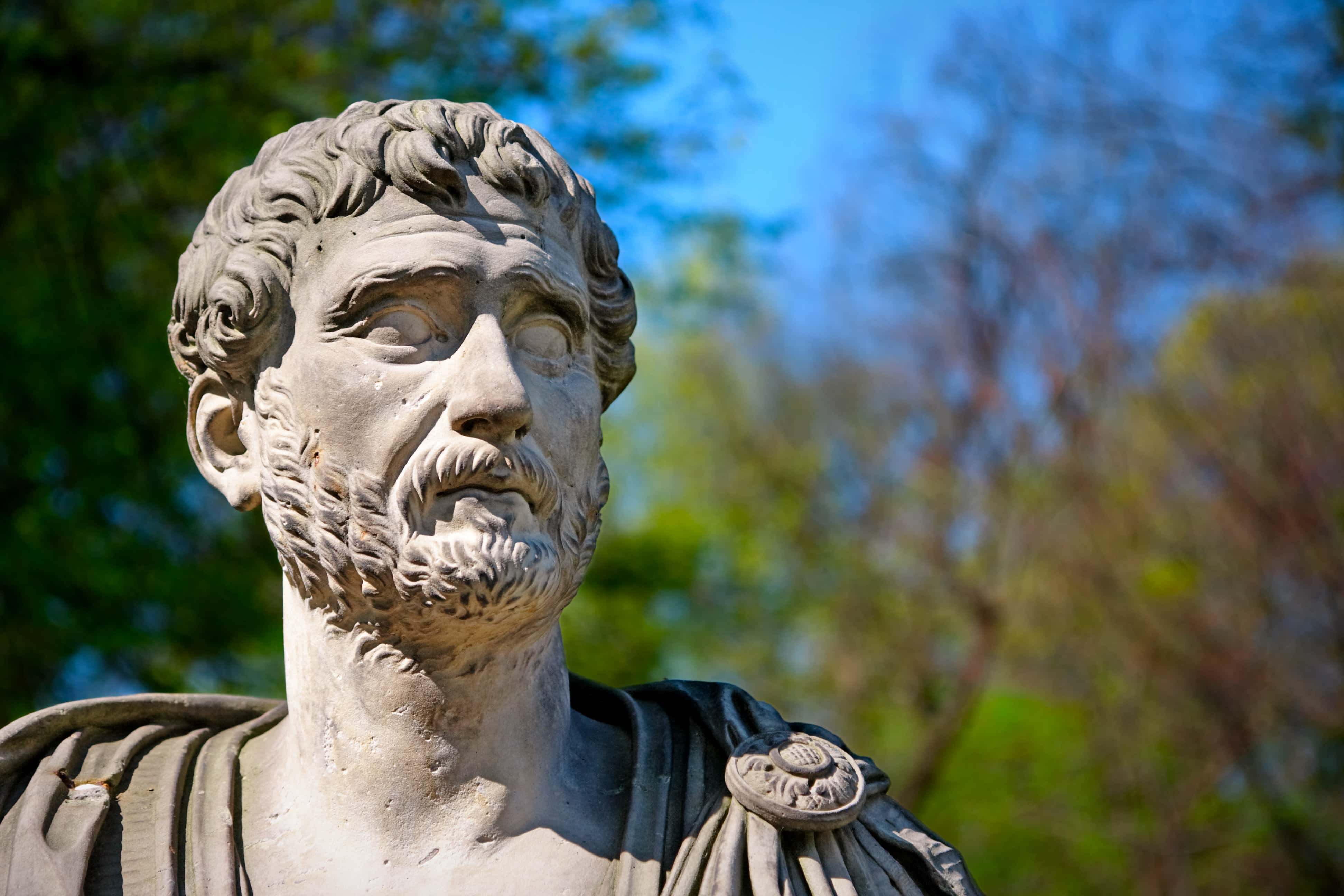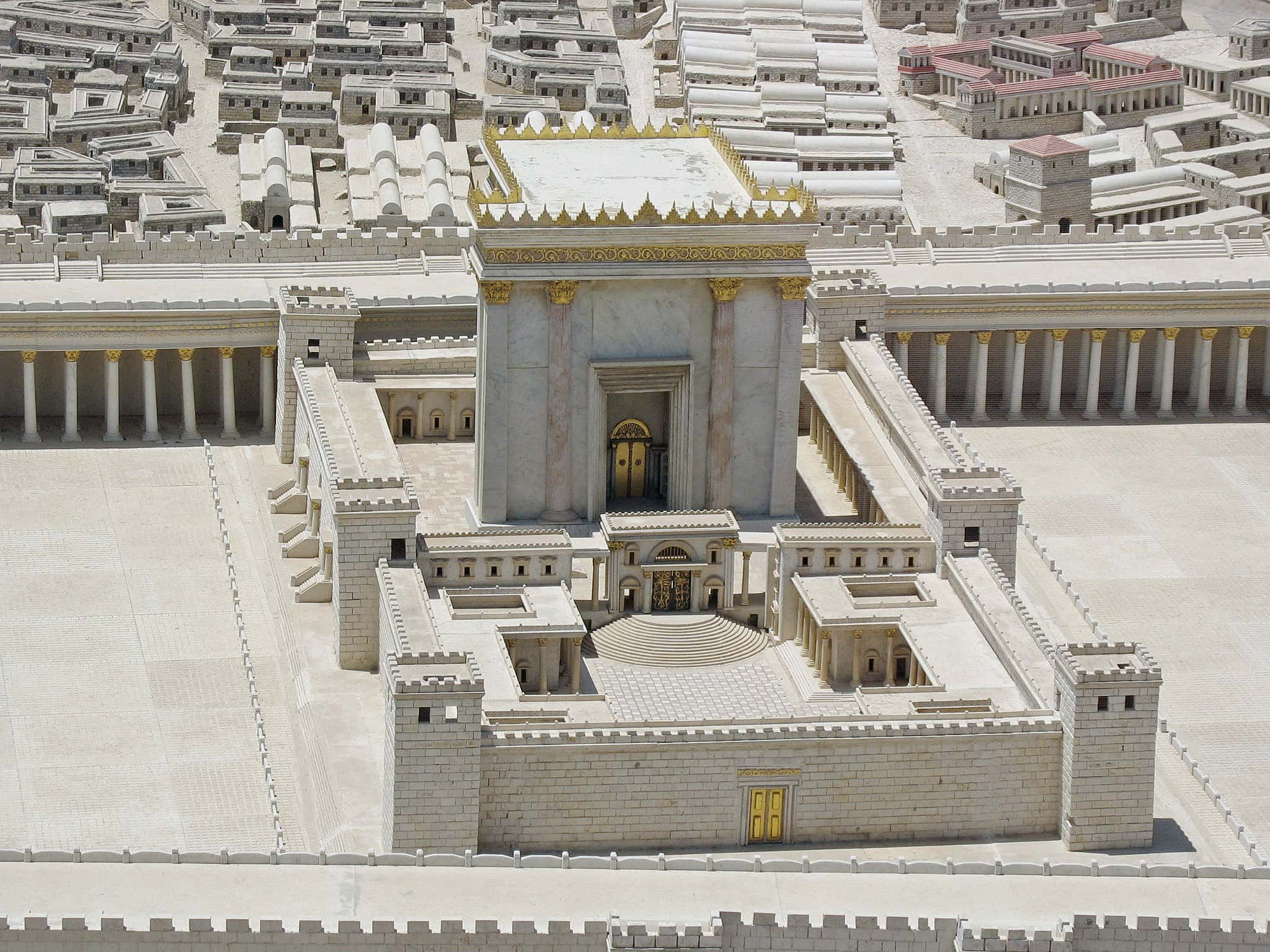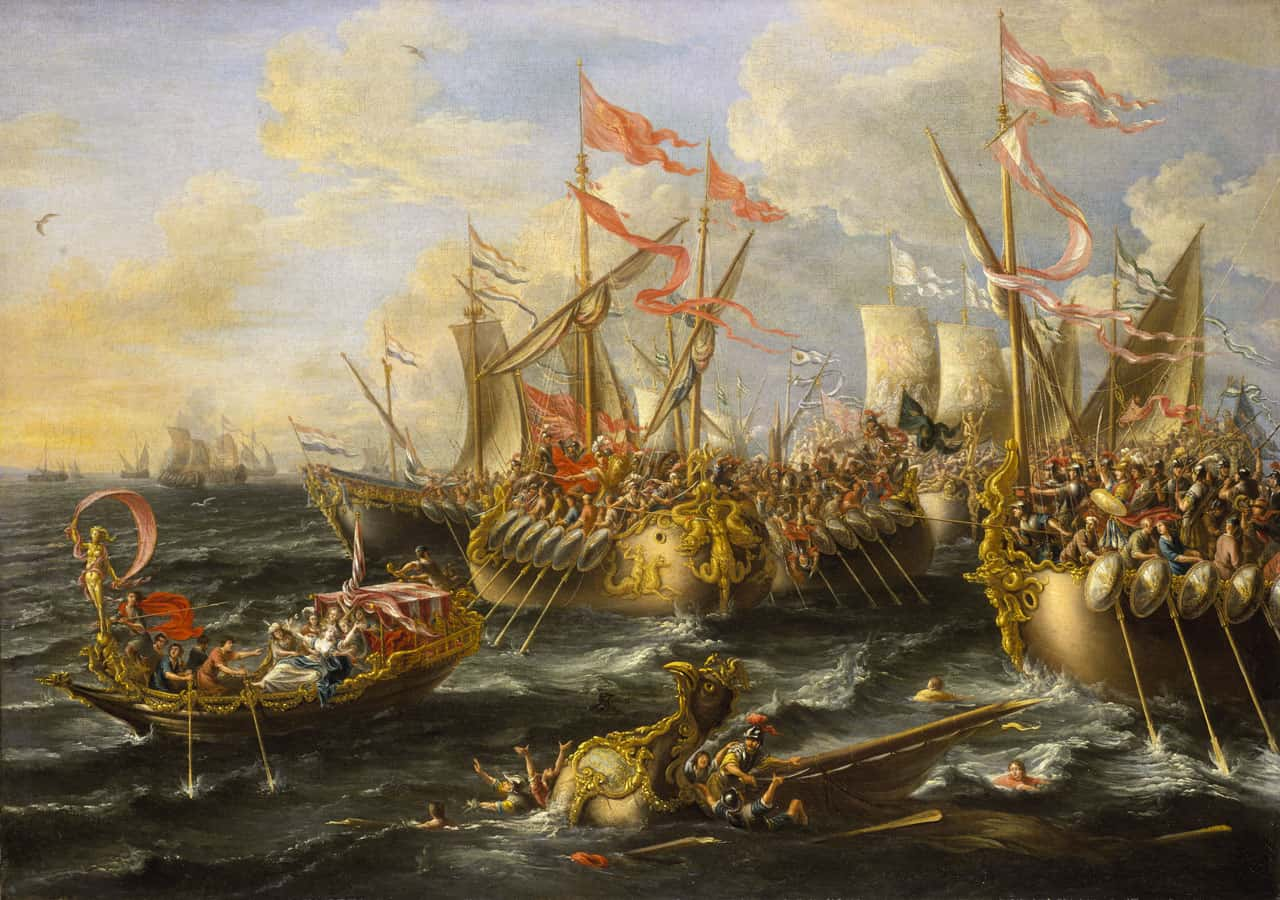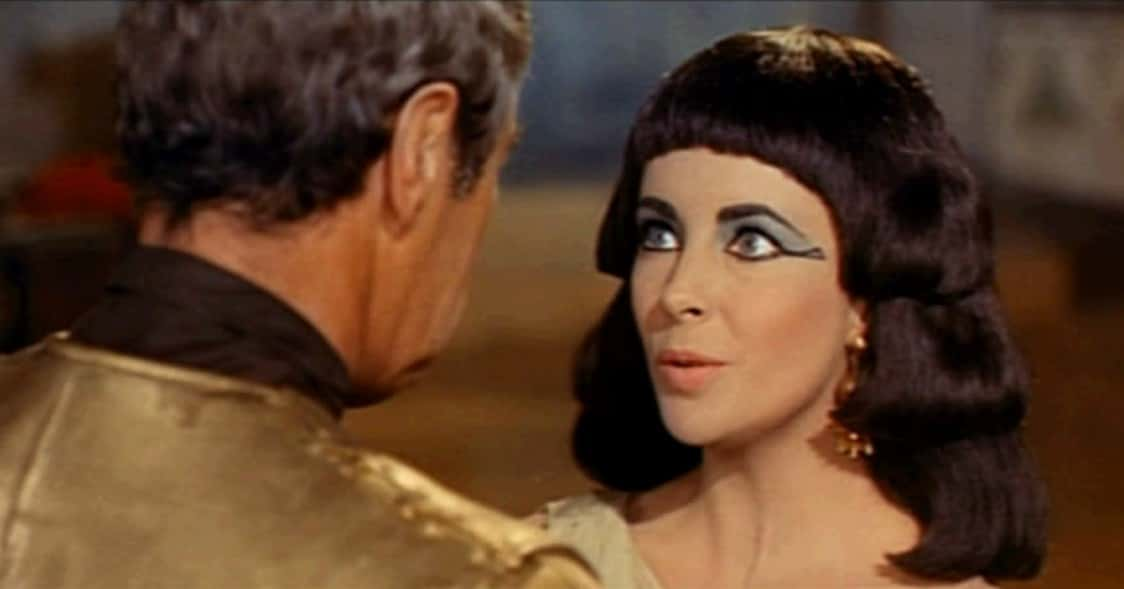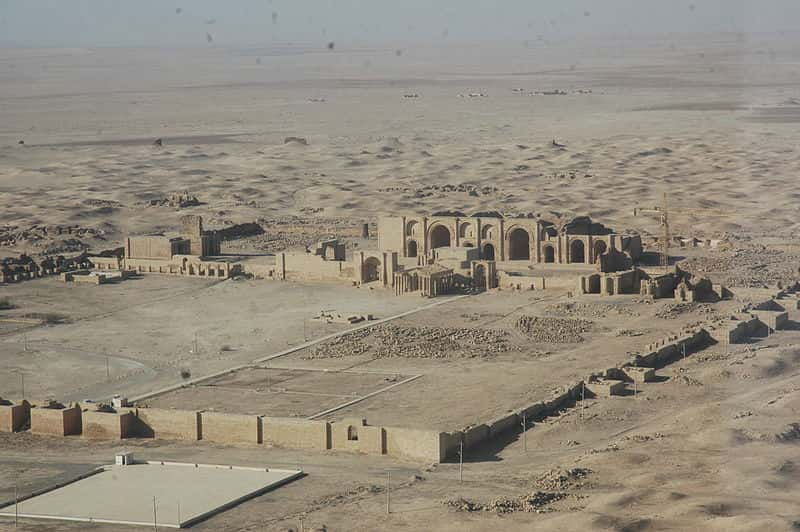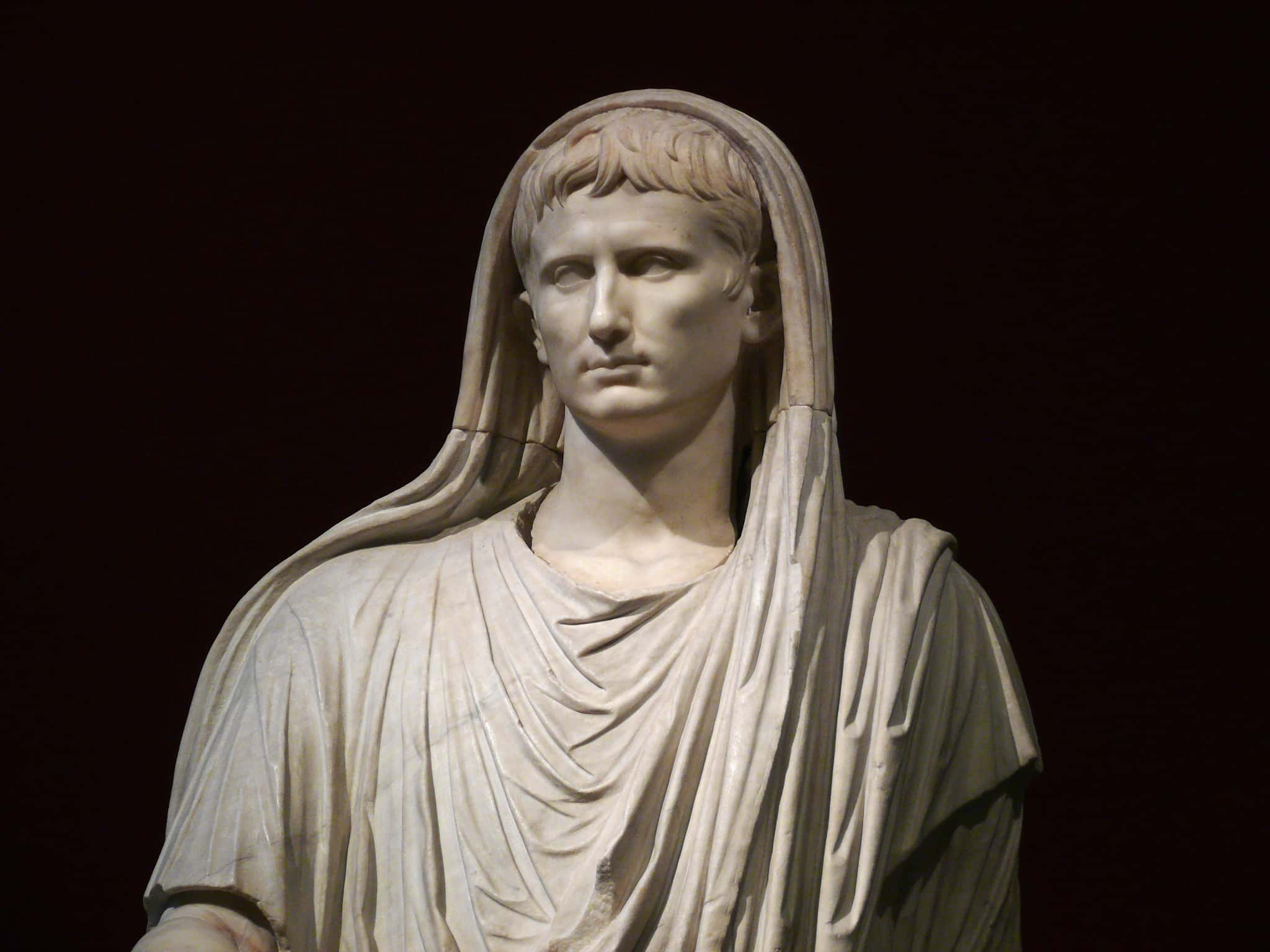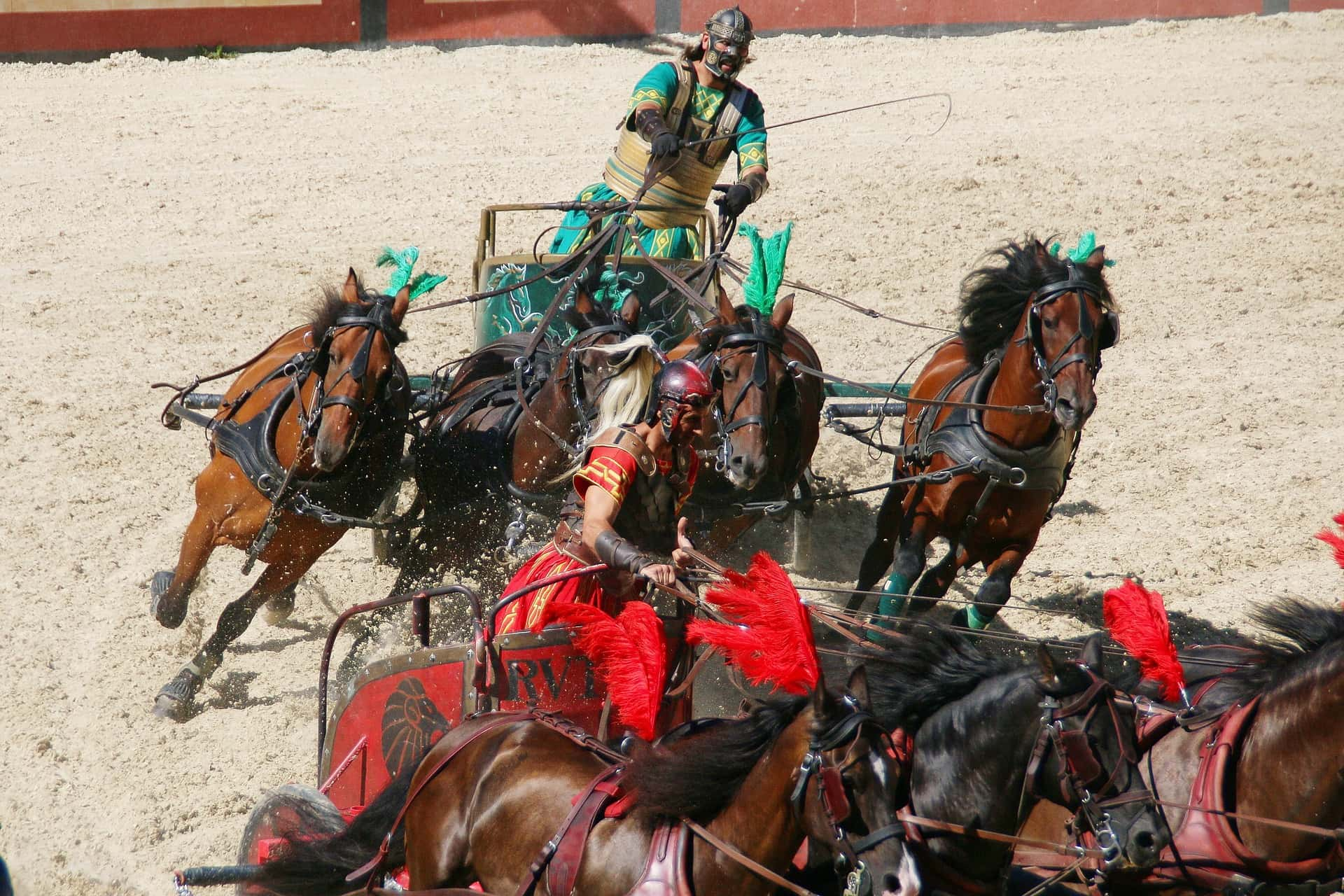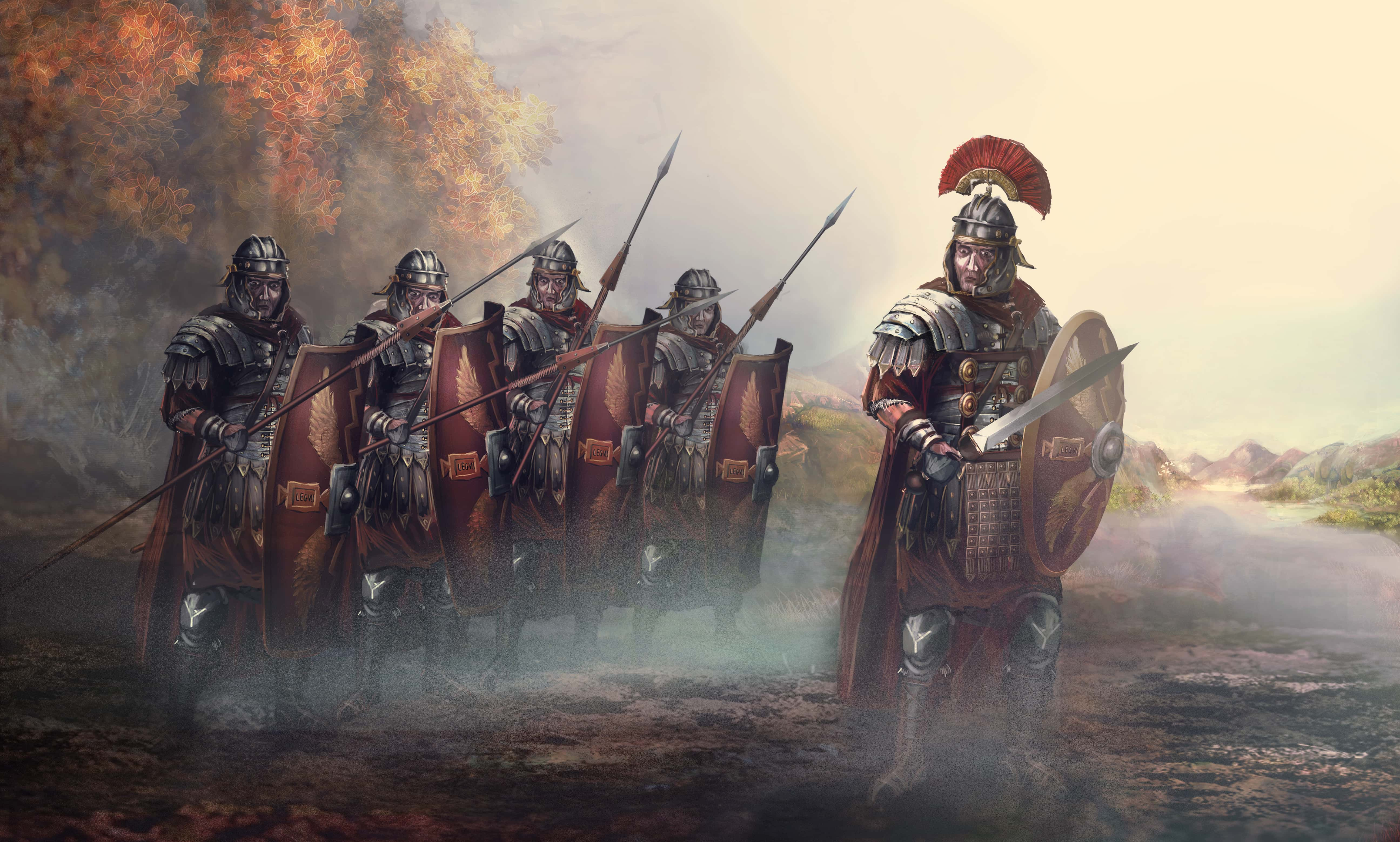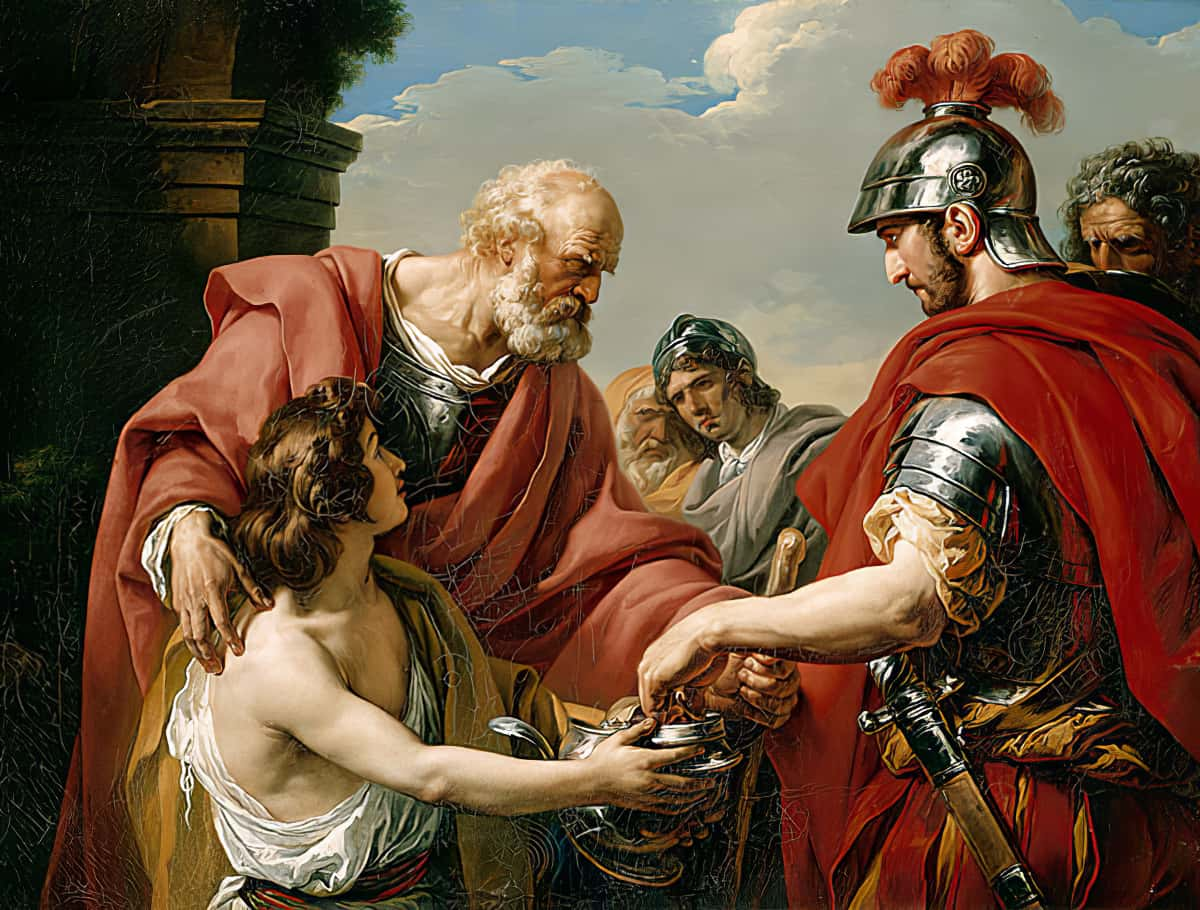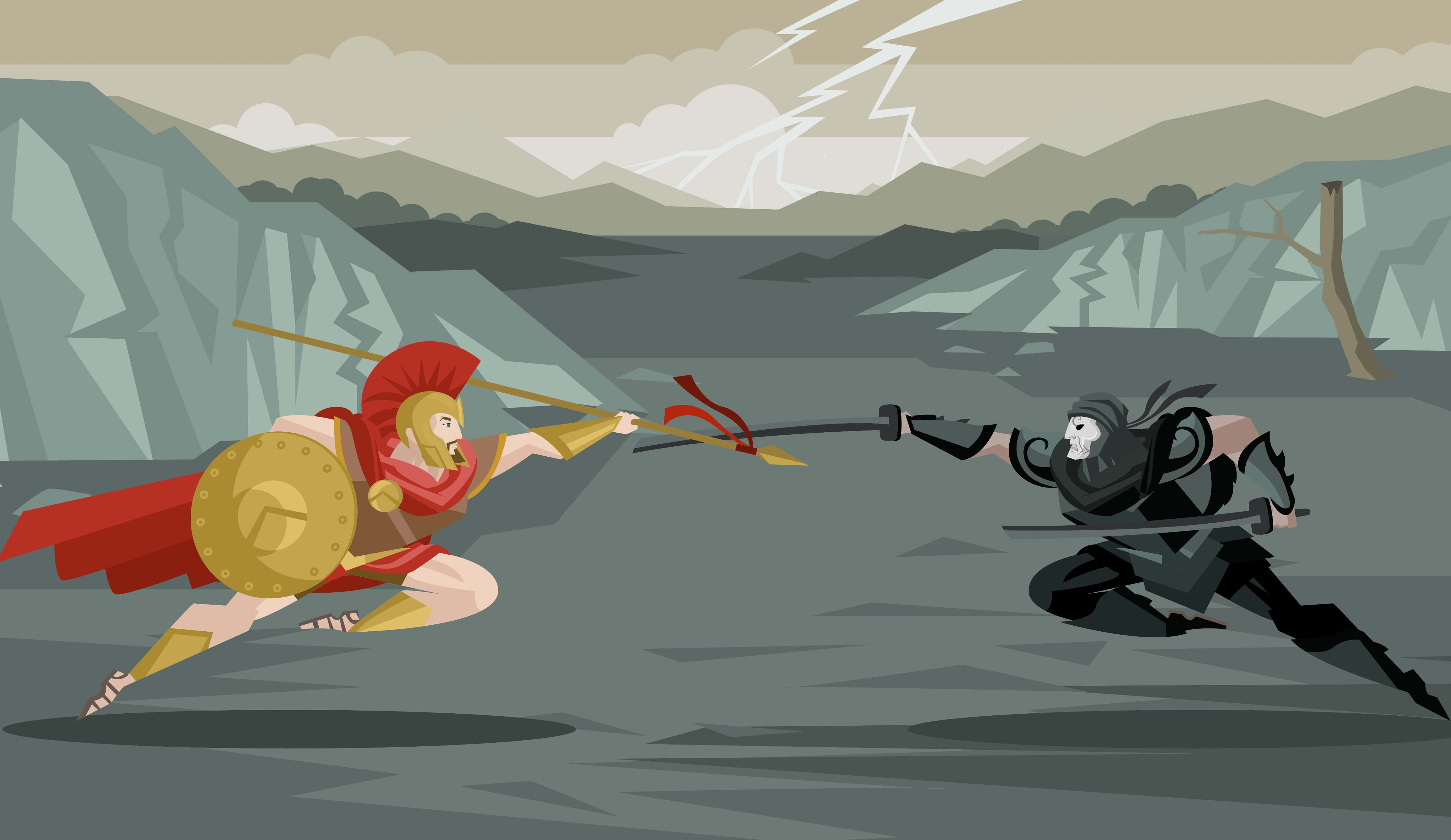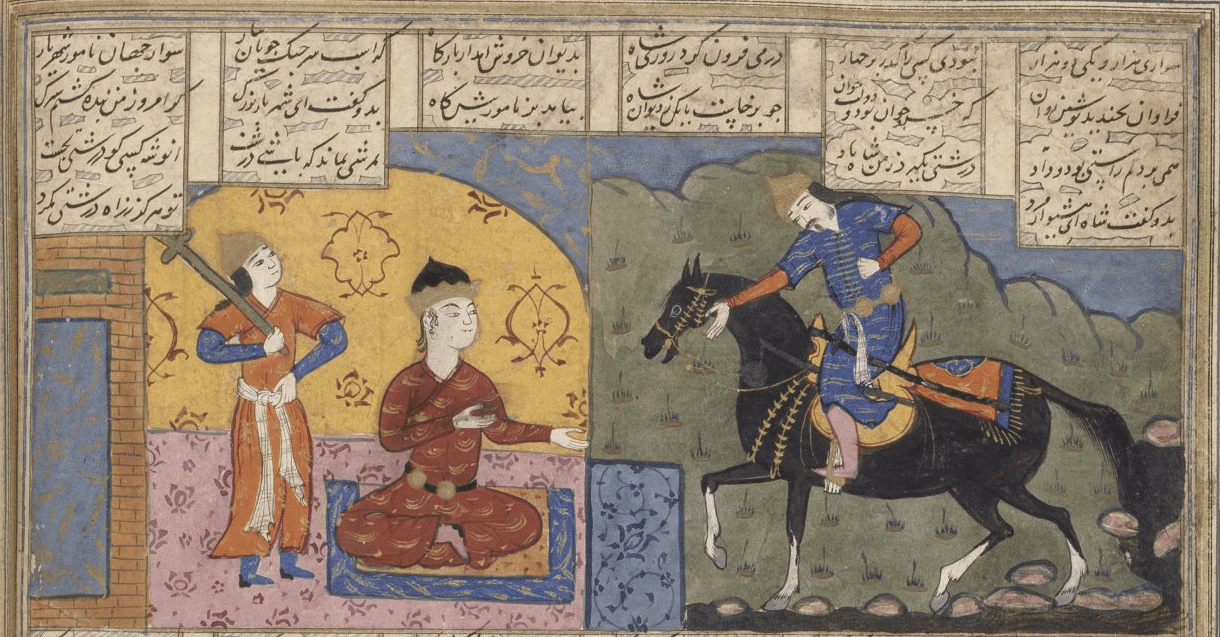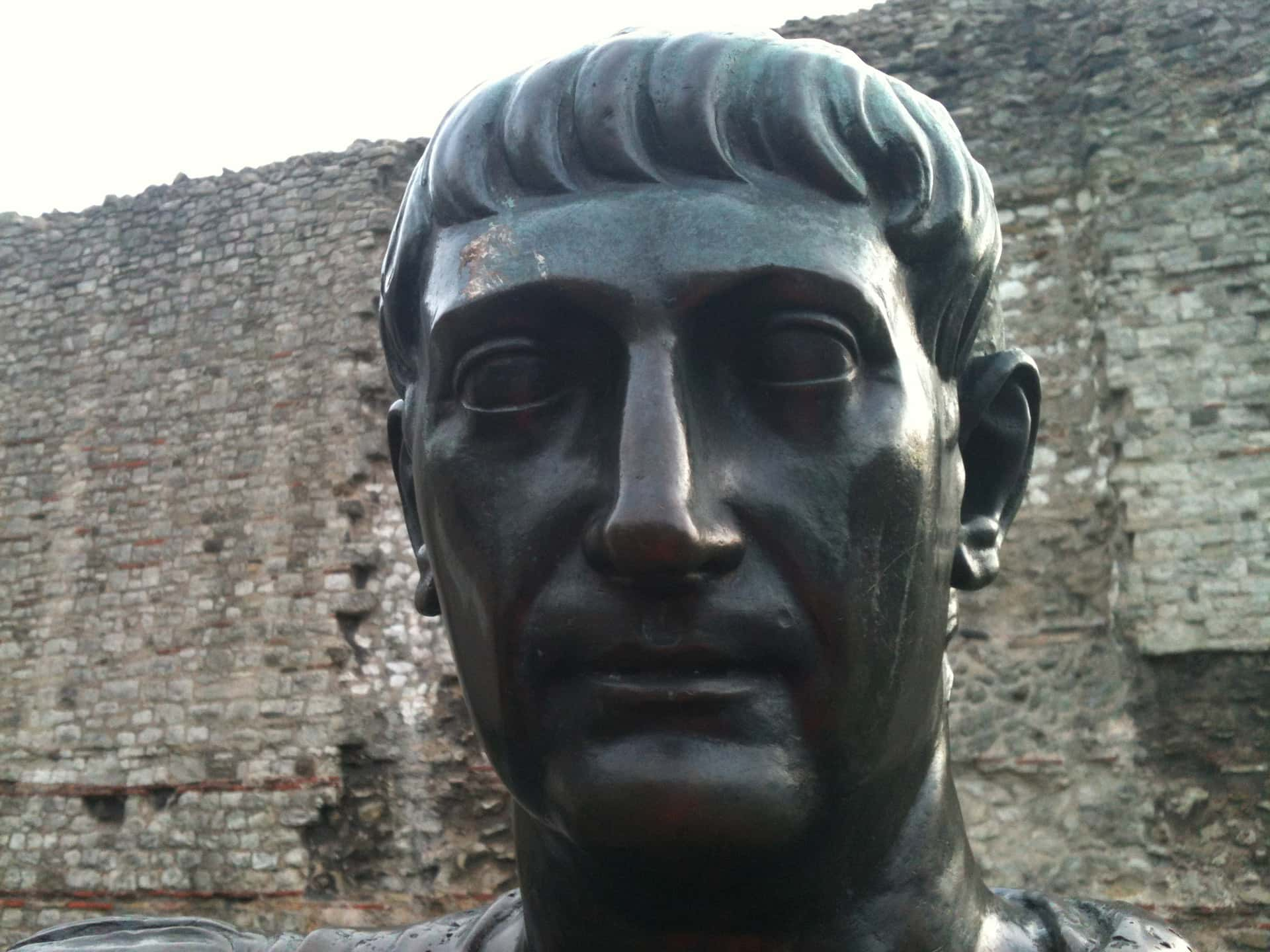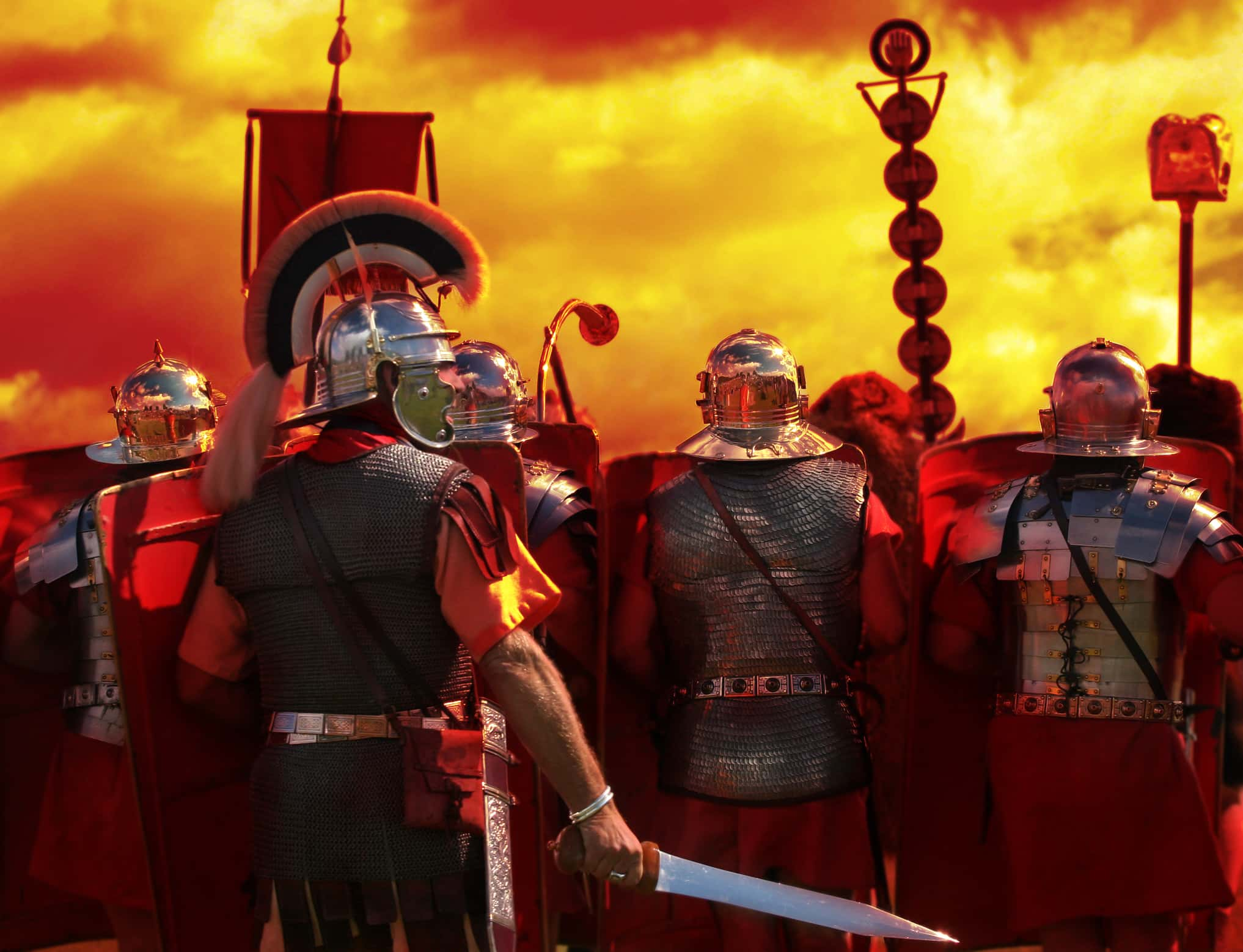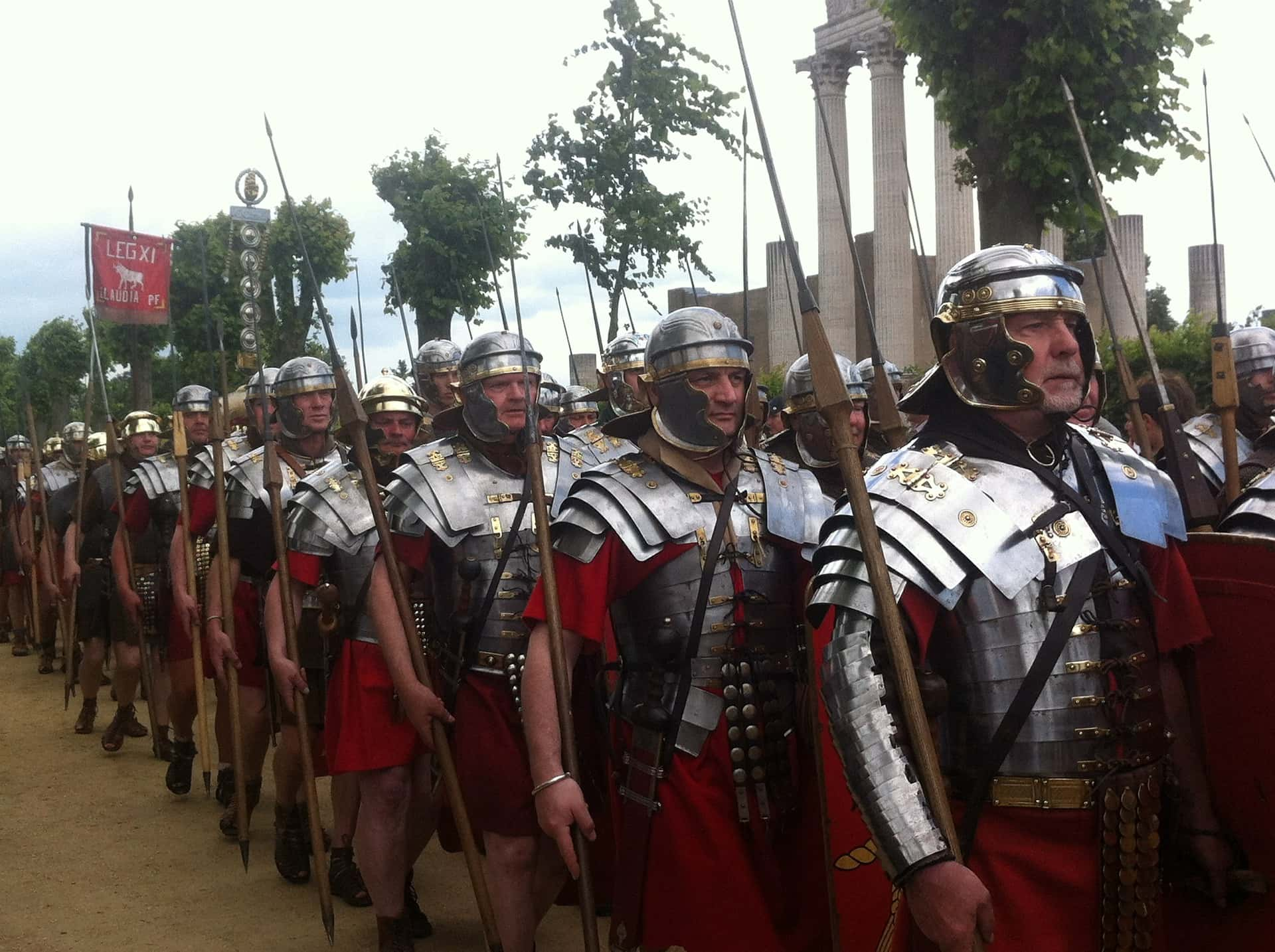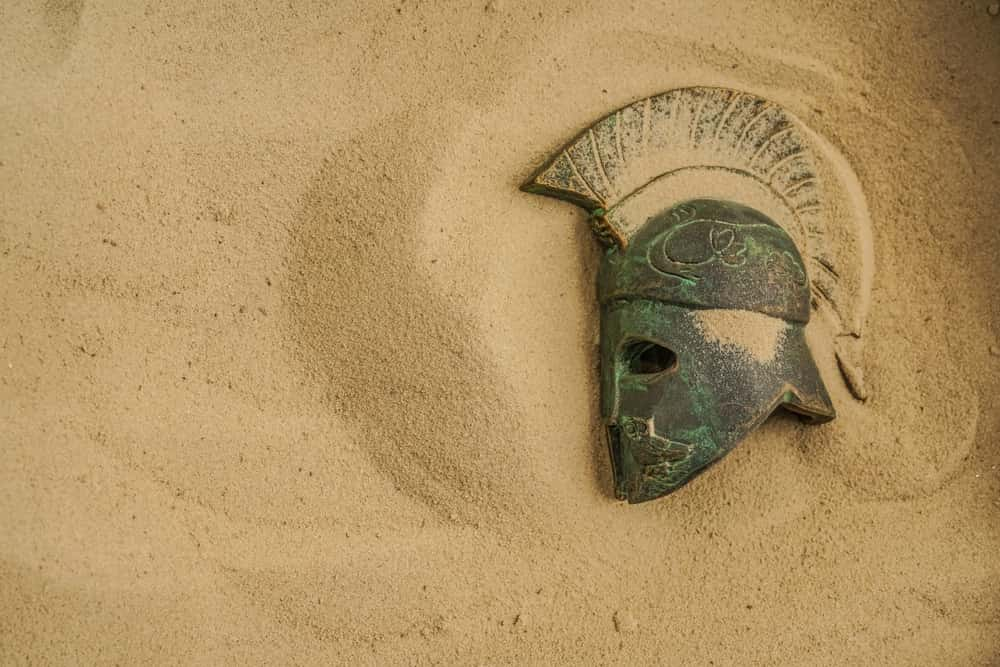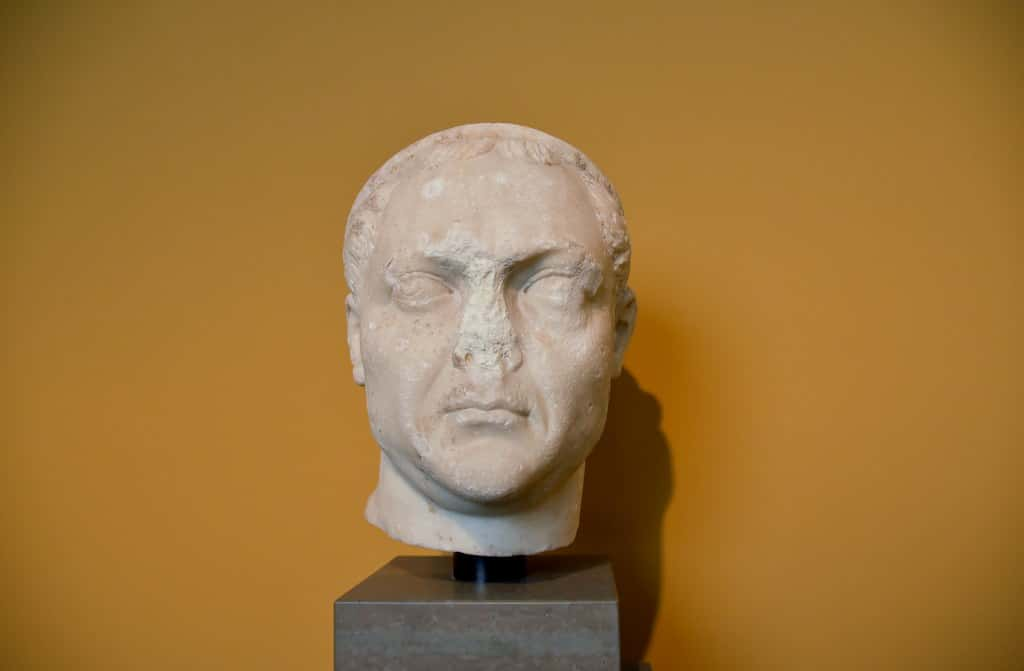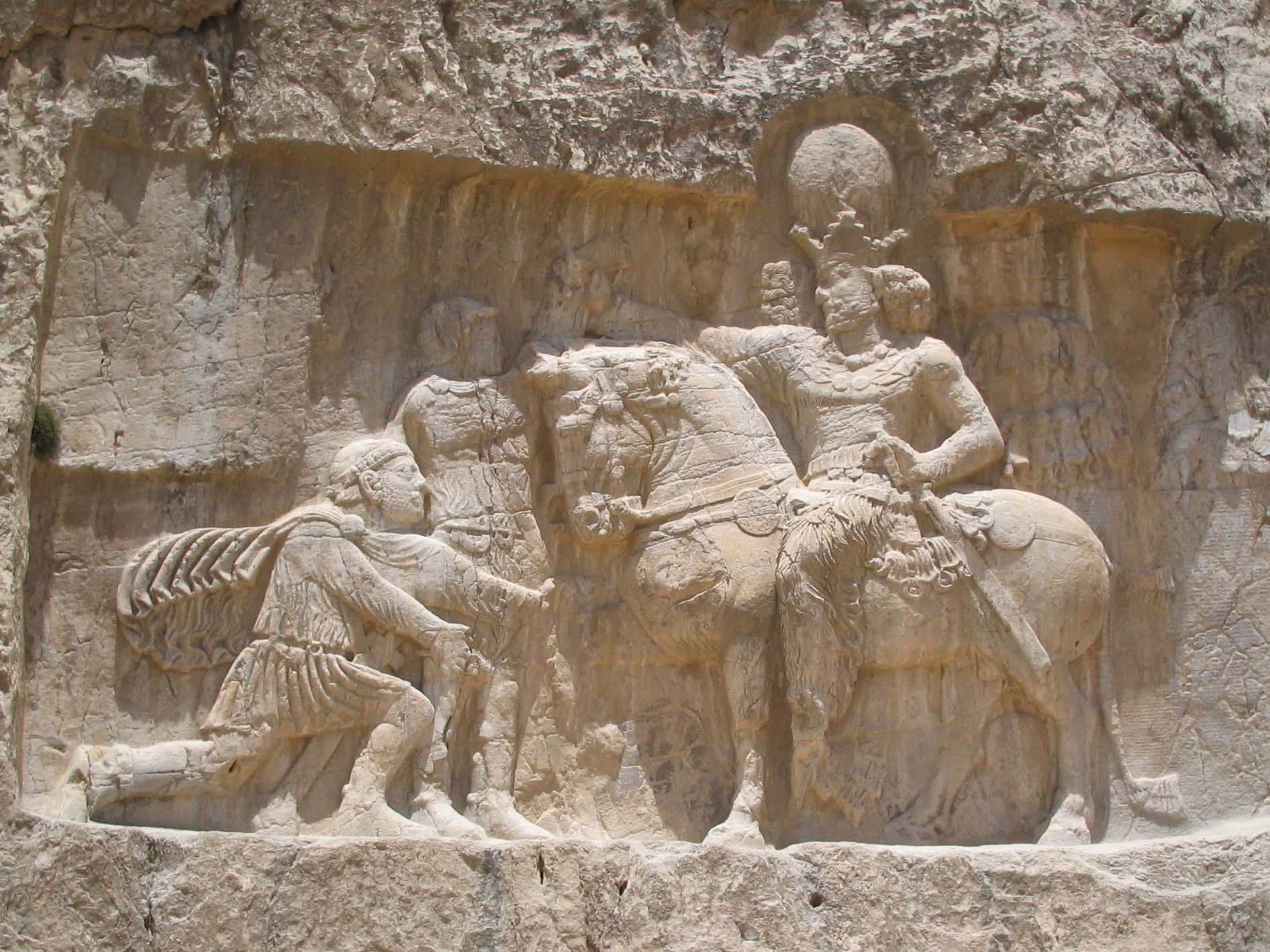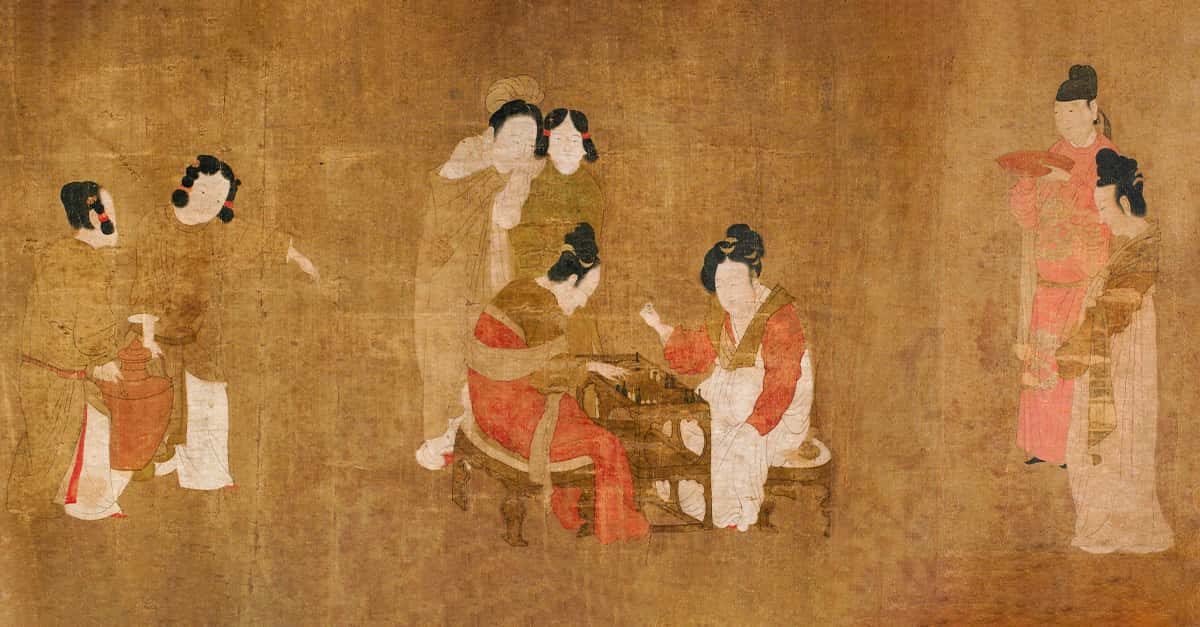The Roman-Persian Wars stretched for nearly seven centuries and contained many different battles and iterations. Territory belonged to the Parthians one year, the Romans the next, and the Sassanids the one after that. Naturally, such a long period of fascinating history produces some rather interesting characters. What do the sex-obsessed Caligula, the Egyptian queen Cleopatra, and a eunuch from Constantinople have in common? The Roman-Persian Wars, of course!
Roman-Persian Wars Facts
1. A Long, Long Way
The various conflicts, battles, and all-out wars that made up the Roman-Persian Wars were amongst the longest in human history. When all was said and done, the wars lasted approximately seven centuries—from BC to AD! Since the wars raged for so long, life was actually pretty stable in the region, though a number of cities, especially Constantinople (modern-day Istanbul), traded hands numerous times.
2. You Bumbling Fool!
Despite their sweeping and breadth, the Roman-Persian Wars saw their fair share of incompetence. Enter: Phocas. The Byzantine emperor was known for being completely inept when it came to economic and military strategy. His weakness gave a man named Heraclius the chance to besiege Constantinople, capture the city, execute the emperor, and take the Byzantine Empire for himself.
This was one of the last major conflicts of the Roman-Persian Wars, before the Islamic Caliphates took over.
3. Sowing Your Own Seeds
When Phocas needed help from his neighbors to fend off Heraclius in the siege of Constantinople, he was left wanting. The problem was that Phocas came to power under a cloud of controversy. He usurped the position of Emperor and has his predecessor, Maurice, assassinated. Phocas then went about quelling dissent by slaughtering any enemies and purging those involved with conspiracies.
His reign was nothing short of a bloody mess.
4. A Family Man
Not content with executing his predecessor, Emperor Maurice, Phocas also had all of Maurice’s family killed as well—Phocas actually forced Maurice to watch each of his six sons be killed before the ax finally fell upon him. Initially, Phocas had Maurice’s wife and daughters sent to a convent, but fearing retribution, he eventually made sure they were done away with as well.
Needless to say, Phocas was not great at making friends.
5. Spartacus! Spartacus!
It could be said that Marcus Licinius Crassus, the legendary Roman general, was the man responsible for the start of the Roman-Persian Wars. After he squashed the slave revolt of Spartacus, Crassus used his newfound popularity to convince Julius Caesar that the Romans should think bigger. He was the one who started the Roman conquest of lands to the east of the Republic.
6. Getting Greedy
Crassus stoked the fires that began the Roman-Persian Wars mostly because of his own greed. After so much success pushing the Roman Republic eastward, Crassus was given the governorship of Syria. Instead of retiring into the easy life, though, Crassus thought it was a good idea to go ahead and attack Parthia by crossing the Euphrates River.
7. The Head Honcho
Marcus Crassus might have been very successful against the Parthian empire if not for his own hubris. Before his march across the Euphrates, Crassus sought aid from Artavazdes II, the King of Armenia. Artavazdes promised Crassus a significant army if only the Roman general would march through Armenia into Parthia, rather than crossing the Euphrates, which could be very dangerous.
Ever in a hurry, Crassus shrugged off Artavazdes and had his men cross the famous river. Not only would this prove to be a fatal mistake, but it also effectively kicked off the Roman-Persian Wars.
8. Fence Sitter
Artavasdes II, the King of Armenia, perhaps best encapsulates the chaotic nature of the Roman-Persian Wars. Initially an ally of Julius Caesar, Artavasdes had to proclaim allegiance with the Parthians when they invaded Armenia in 54 BC. He even gave up his sister to marry the son the Parthian king. In other words, he was caught between a rock and a hard place, and had to constantly switch sides to keep his head above water.
9. Pump up the Volume
Khosrow II, shah of the Empire of Iranians (also known as the Sassanids), began the final phase of the Roman-Persian Wars when he invaded the Byzantine Empire in 602. Although his reign was primarily known for this constant fighting with the Byzantines, it was also a time of great cultural production. His reign is known as a golden age for music as many composers and musicians rose to prominence.
Khosrow II was deeply interested in the arts and in decadent displays of pageantry.

History's most fascinating stories and darkest secrets, delivered to your inbox daily.
10. Just to Make Them Cross
The final phase of the Roman-Persian Wars between the Sassanids and the Byzantines quickly became a battle for status. Most central to the image of success in the war was the possession of the True Cross. The True Cross was believed to be the remnants of the wood used to crucify Jesus Christ. The Sassanids first took the True Cross from Jerusalem when they sacked the city in 614.
Eventually, the Byzantines got the cross back from Iran when they defeated the Sassanids in 628.
11. Ladies’ Man
Khosrow II, the man who invaded the Byzantine Empire in the last phase of the Roman-Persian Wars, was legendary for his lavish lifestyle. One source claimed that he had over 3,000 concubines.
12. Brotherly Love?
Orodes II was on the opposite end of the Roman-Persian Wars: He was the Parthian king first attacked by Marcus Crassus in 53 BC. But by that time Orodes, was already well-versed in struggles for power. He was in constant competition with his brother Mithridates, who was the king of Media. After Mithridates briefly invaded Parthia and removed Orodes from the throne, Orodes decided he needed to be rid of his brother.
After managing to regain Parthia, he had his brother executed.
13. Enough is Enough
The first pause in the Roman-Persian Wars came thanks to the tempered vision of Emperor Hadrian. The man who gave his name to Hadrian’s Wall was also tired of the resource-draining fighting against Parthia. He re-established the Euphrates River as the boundary of the Roman Empire in a move that is known as the status quo ante bellum, "the way things were before the war."
The was an extremely different view from the expansionist policies of his predecessors.
14. A Conflicted Man
Hadrian has had a conflicted legacy as a Roman Emperor. He was the man who negotiated peace with Parthia to end the first conflict in the Roman-Persian Wars and has often been seen as a “benevolent dictator.” Yet his own senate was far less charitable to Hadrian’s aims. After his death, they talked about his exploits as hypocritical and confusing.
He would be extremely brutal in one action, then show great charity and generosity in the next.
15. Record Keeper
The Kingdom of Armenia was a perpetual battleground between Rome and Parthia. One would think this would mean that most Armenian history from the period would have been lost to time, but thanks to Moses of Chorene, a scholar and poet who wrote the very first history of Armenia in 474 AD, we still know a lot about Armenian culture during this particularly virulent era of conflict.
16. Bridge to Nowhere
The Roman-Persian Wars were not just characterized by silly old things like battles and sieges. There were bridges to build! Ever the entertainer, Emperor Caligula had a two-mile floating bridge constructed so that he could rival a similar feat performed by the Persian king Xerxes. As the cherry on top, Caligula road across the pontoons wearing the breastplate of Alexander the Great.
17. Idolatrous Tensions
Although Caligula’s rule as Emperor can be defined as one of relative peace in terms of Roman-Persian relations, it was not for a lack of effort on his part. Caligula was deeply anti-Semitic and in a bid to spread Roman culture and law in the Eastern reaches of the empire, he ordered the Jewish Temple of Jerusalem to erect a statue of himself.
It took the pleading of the Governor of Syria to finally convince Caligula to change his mind, thus sparing an upheaval.
18. Seizing Power
After the assassination of Julius Caesar, Republican dissenters fled to Parthia as a way of escaping retribution from Mark Antony and Octavian (the future emperor Augustus). This dragged the Parthians into the war that followed Caesar's assassination, known as the Liberators' Civil War, and it meant that the Roman-Persian Wars were back in full swing.
19. All’s Fair in Love and War
I suppose one good thing about the Roman-Persian Wars is that it gave us one of the most compelling love stories of all time. In order to fund the continuous siege of Syria and fighting against Parthia, Antony sought help from the Egyptian Empire. Thanks to this partnership, Antony was able to develop his relationship with his future lover, Cleopatra.
20. Star Crossed Lovers
At a time when the Roman Empire was being stretched thin thanks to its far-reaching wars in Persia and Gaul, Antony caused even further rift in Rome when he left his wife and children in order to become the lover of the Egyptian Queen Cleopatra. After refusing to return to Rome on several occasions, favoring instead to stay in Alexandria with his new lover, Antony lost all influence in the Empire.
21. Unbreakable City
On at least two occasions, under the rule of Emperor Trajan and again under the direction of Emperor Septimus Severus, the Roman Empire came within inches of completely overtaking the Parthians. Both times, though, they fell at the city of Hatra. Now a UNESCO World Heritage Site, Hartra was an impressive city with a circular design and several layers of inner-city walls and towers that made it a strategic nightmare when it came to invasion.
It was only when Shapur I led his Persian army into the Parthian city that it finally fell in 241 AD.
22. Taking Matters Into His Own Hands
Octavian quickly gained power in Rome thanks to Antony’s failure in Parthia and his romance with Cleopatra. To cement that power, Octavian invaded Egypt where Antony and Cleopatra were residing. After receiving word of Octavian’s imminent arrival, along with the news that Cleopatra had committed suicide, Antony took his own life with his own sword—only to find out that he was mistaken and Cleopatra was still very much alive.
His friends managed to get him to his lover's side before he finally died in her arms.
23. Sex Positive
Not only was Justinian one of the last successful Roman emperors to take part in the Roman-Persian wars, he was also pretty woke. Thanks in large part to the fact that his wife Theodora lived for so long as a courtesan, Justinian passed a series of laws in Constantinople to protect prostitutes and stopped women from being forced into prostitution. He also passed a number of laws to improve the social position of women in the empire.
24. Chariots of Fire
Like many forward-thinking politicians, Justinian I was not particularly popular in Constantinople, even as he was winning so many conquests in the campaigns such as the Iberian war. In particular, a faction of chariot racing fans (essentially ancient soccer hooligans) was rather unhappy with Justinian’s choice of ministers. So they started a riot. The Nika Riots epitomized the powder keg that was Constantinople during the Roman-Persian Wars.
What started as a brief skirmish resulted in almost half the city being destroyed and approximately 30,000 people being killed!
25. Last of the Romans
Flavius Belisarius has often been called the “Last of the Romans,” because he was a major reason for Justinian’s success in expanding the Byzantine Empire back into the former territories of the Roman Empire. Even though Justinian was rather hot and cold with Belisarius on personal terms, the general always stuck to his task and managed a number of impressive victories throughout his career, especially during the campaigns in Italy and the Iberian war (which was fought over territory in what is now Georgia).
26. Legendary Leader
Justinian I’s main man Belisarius cemented his reputation in one of the decisive battles of the Iberian War. Some 50,000 Persians lined up against the Byzantine army at the Battle of Dara, while Belisarius only had 25,000 men at his disposal. Despite the numerical inferiority, Belisarius showed his brilliant tactical chops by continuously forcing the Persians to charge through unfavorable terrain.
In the end, the Persians were forced to retreat, and many of their men were run down by the Byzantine cavalry.
27. Cast(rated) Away
Alongside Belisarius, Narses was one of Justinian’s most important generals during the latter stages of the Roman-Persian Wars. He was also a eunuch. A eunuch is a man who was castrated early on in his life, which creates major hormonal changes. Nobody ever really knew how he became a eunuch and rather than explaining, Narses instead allowed the legends to grow wild.
28. In and Out of Favor
Despite almost single-handedly strengthening and expanding the territories of the Byzantine Empire, General Belisarius had his enemies. After coming out of retirement to save Constantinople one last time, Belisarius was rewarded with a trumped-up charge of corruption. The Byzantine historian Procopius was said to have presided as judge of the kangaroo court.
Belisarius was imprisoned, only to eventually be pardoned by Justinian for his years of service.
29. Who's That in Bed With My Wife!
Belisarius had a bit of an unhappy retirement, despite his outstanding legacy as a military commander. It was common knowledge around Constantinople that he was a cuckold—his wife Antonina had frequent extramarital affairs, including with her adopted son, Theodosius! Now that's some Lannister business if I've ever seen it!
30. Eyes Wide Shut
One particularly graphic rumor that circulated some years after both Belisarius and Justinian died was that the former had only pardoned the latter in order to punish him further. The story went that Justinian plucked out Belisarius's the eyes and made him live out the rest of his days as a blind beggar. This version of events likely wasn't true, but it makes for a great campfire story!
31. Shoot the Messenger
The Iberian War erupted mainly because of the petty squabbling of two men: Emperor Justin I and King Kavadh I. Kavadh was looking to solidify the holdings of the Sasanian Empire by forming an alliance with the Byzantine Empire. Kavadh offered to allow his son to be adopted by Justin I as a sign of new unity and friendship, but Justin refused as the negotiations broke down, putting the two empires in conflict.
32. Short-Lived Eternity
It probably should be a rule that when you're creating treaties with neighboring nations, kingdoms, or communities, words like “forever” and “eternity” ought to be avoided at all costs. This goes doubly when the two parties are at the long end of a nearly seven-century feud between Romans and Persians. When Khosrau I (Kavadh I's successor) and Justinian I (Justin I's successor) met to bring an end to the Iberian War, they chose the unfortunate name of the “Eternal Peace” for the agreement.
Well, their agreement didn’t even last eight years. Not exactly an "eternity."
33. As Far as the Eye Can See
The height of the Roman-Persian Wars came at the time of Trajan’s rule as Roman Emperor. Trajan is best known for ruling over the largest expanse of the Roman Empire. During his time as Emperor, the Empire expanded eastwards through Mesopotamia and almost completely destroyed the Parthians. Eventually, the Romans fell at the last hurdle, as they couldn’t ever quite take the city of Hatra.
34. The Battle of Good and Evil
Shapur I, who was the first Persian Emperor to successfully capture a Roman emperor, was a firm believer in Ahura Mazda, the god of Zoroastrianism. As one of the world’s oldest religions, Zoroastrianism favors free will and messianism. In effect, the thing governing Shapur’s ideals during a time of great strife with the Roman Empire was the idea that he was operating in a battle of good versus evil.
His victory was divinely inspired to result in the ultimate destruction of evil!
35. Once Upon a Time in Armenia
Mark Antony was responsible for one of the worst Roman defeats in the whole of the Roman-Persian Wars. Marching deep into Parthian territory, Antony’s army was quickly stretched thin and attacked with devastating efficiency. Utterly decimated, Antony attempted to retreat to Armenia, but he lost another 20,000 men and 4,000 cavalry soldiers during the flight.
His failed campaign resulted in a loss of two-fifths of his army.
36. Best Laid Plans
Crassus's attempt to invade Parthia ended in utter disaster. His legions immediately suffered a brutal defeat at the hands of a much smaller Parthian force. Realizing his cause was lost, he attempted to parlay with his enemies—only to be killed in a skirmish while en route. Not exactly the best start to seven centuries of conflict.
37. Try, Try Again
After Crassus's disastrous defeat, Julius Caesar decided he'd give crossing the Euphrates a try. Not only did Caesar want to avenge the death of his general Marcus Crassus, but also wanted to punish Parthia because they had sided with Pompey, who had tried to remove Julius Caesar from power. Just before he laid out his plans to invade Parthia, though, Caesar was assassinated on the Ides of March.
38. Sparkling Campaign
Carus was perhaps the most successful of Roman Emperors when it came to invading Persia. He made it all the way to the Sassanid capital of Ctesiphon—but the gods and the Persians had the last laugh. After successfully taking the city, Carus was killed unexpectedly when he was struck by lightning! By Jupiter!
39. Caution of the Gods
All of Carus’ good work making inroads into the heart of Persia was very quickly undone thanks to the mysterious nature of his death and the general ineptitude of his successor. Numerian, Carus’s son, was not fond of war and quickly ran back across the Tigris. It didn’t help that his troops, upon learning of Carus’s death by lightning-struck, thought their campaign was cursed by the gods.
40. Serving Time
Valerian the Elder had the unfortunate record of becoming the first Roman Emperor to be captured as a prisoner of war. At the battle of Edessa, the Persian Emperor Shapur I captured Valerian and forced the emperor and his fellow Romans into slavery. Such a mortifying defeat utterly stunned people throughout the empire.
41. A Mouth of Gold
Emperor Valerian died while still being held captive by Persian Emperor Shapur I. But some debate exists over the actual cause of his death. The two main stories that circulated for a long time were quite brutal. The first claimed that Shapur had Valerian killed by forcing him to drink molten gold. In the second, Valerian was killed by being flayed alive! Sounds like an episode of Game of Thrones!
Sources: 1, 2, 3, 4, 5, 6, 7, 8, 9, 10, 11, 12, 13, 14, 15, 16, 17, 18, 19, 20, 21, 22, 23, 24, 25, 26, 27

